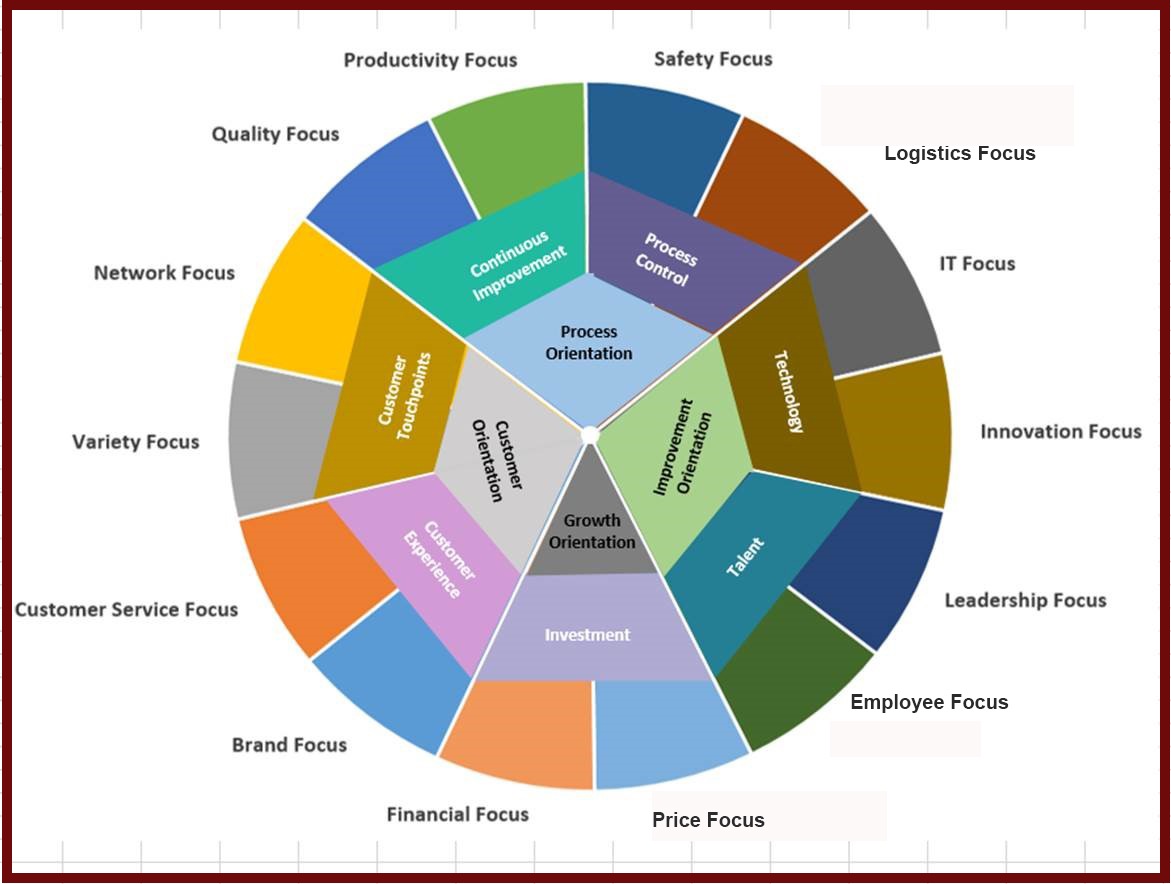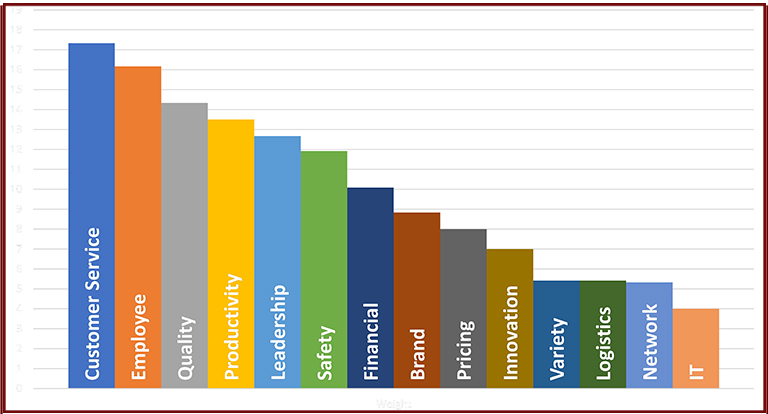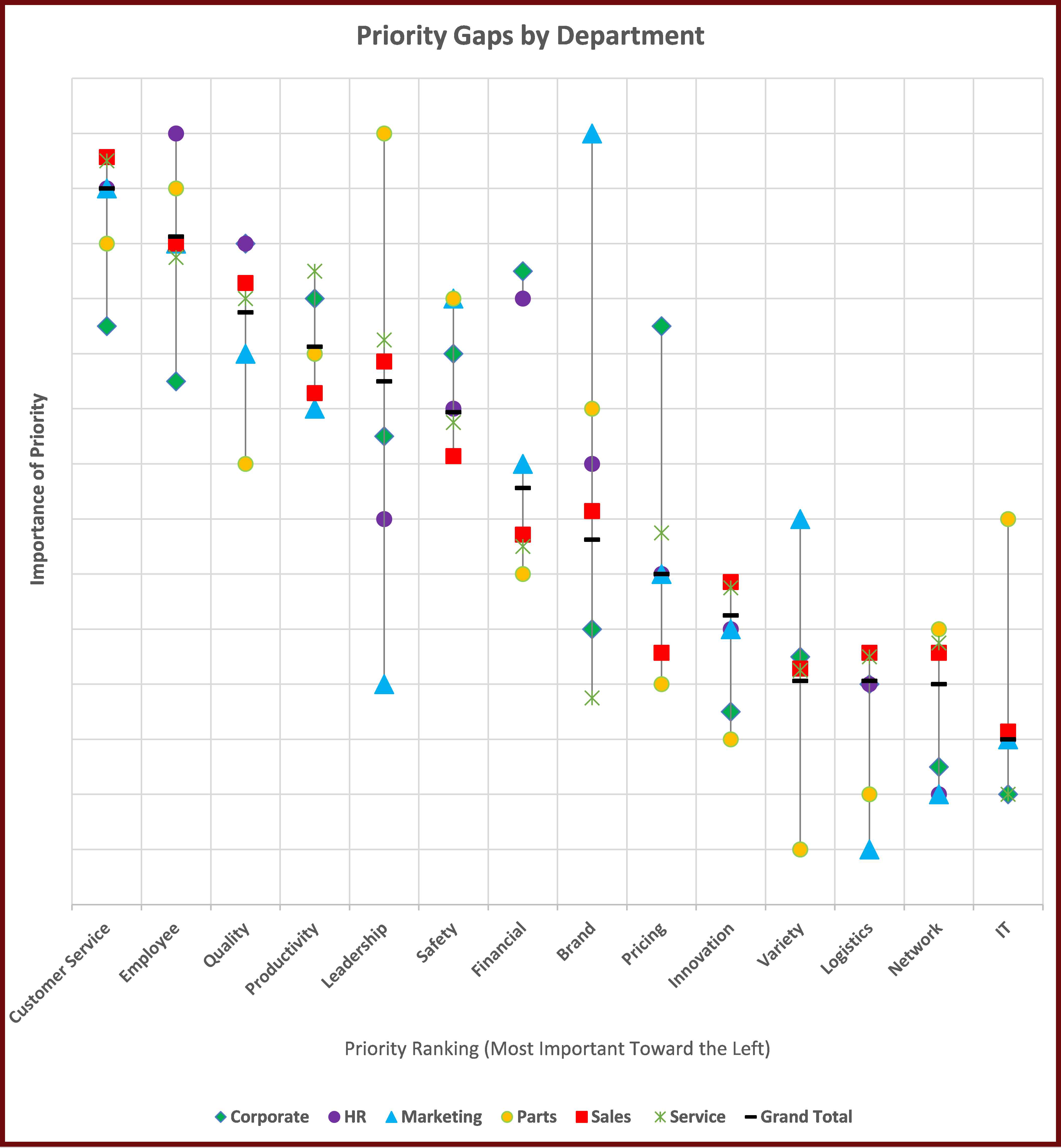Which of these challenges is most pressing in engaging your employees in the Covid-19 era?
- Accelerated speed of change
- Loss of spontaneous collaboration through distance
- Zoom fatigue and difficulty gathering
- Straight-up uncertainty
Strategic Synchronization(c) is your first step to align employee focus and synchronize successful strategies. It’s common for employees of all types and sizes of organizations struggle with:
- Lack of clarity and focus
- Little enablement of leadership
- Lack of coordination between different groups
In contrast to firms that are struggling, high-performing organizations stand out for their ability to understand their people’s priorities and how to balance them with overall organizational priorities. These high performers are strategically synchronized because they have chosen the correct priorities and found ways that they reinforce each other. This approach creates a competitive advantage that is difficult for competitors to duplicate. We call this Strategic Synchronization©..
Developing Strategic Synchronization (c)
Through repeated analyses, 14 key focus areas have risen to the top. These focus areas can be categorized in seven strategic requirements in four organizational orientations.

Initially the insights gained were somewhat subjective. Then everything changed with Covid-19. Nearly every organization is going through some form of transformation. Technology-driven and outsource-driven transformation has been accelerating for many years, but now virtually every organization worldwide must re-evaluate its business model, supply chain, technology or operations.
Strategic Synchronization© is an objective, data driven methodology for aligning teams in deploying organizational strategies. It helps companies to better understand to what extent their stakeholders’ priorities are aligned or misaligned. This knowledge enables them to work through mutual expectations and move through rapid transformations more effectively.
Establishing and Synchronizing Key Priorities

Identify Strategic Priorities
After many senior leader interviews and analysing thousands of employee comments about what was and wasn’t being done well, some common priority areas emerged across many industries.
- What are the common priorities for all organizations?
- How are those priorities were related to each other?
Top priorities include customer focus, employee focus, productivity, quality, leadership, and pricing. Other focus areas include branding, finance, network, innovation, safety, logistics, IT and variety.
Align Senior Team Around Priorities
If the senior team lacks alignment about its priorities, there will be confusion and conflict among rank-and-file employees. The wider organization cannot move forward unless there is general agreement among the senior team. The senior team must lead the alignment efforts. The data clearly highlight:
- Priorities with broad agreement
- Priorities with gap areas to be addressed
Senior teams invariably have differences of opinion about the priorities; some of that is natural. For example, you would expect the head of marketing to highly prioritize issues around the brand. The question becomes, “What is marketing doing to make other departments aware of how the brand impacts other important strategic priorities?”

How do we determine if the senior team is aligned?
- The senior team does a ranking exercise from among the 14 strategic priorities.
- The resulting data is aggregated to show where gaps exist among the senior team perceptions.
In most cases, the ranking, reporting and senior team facilitation can take place within one week’s time. It is a quick, cost-effective and powerful way to ensure that the senior team’s priorities are aligned.

Cascade Priorities to Employees
An important success factor out of hundreds of companies studied is that the most successful seemed to have the magic formula for engaging their employees. But the insight from Strategy Synchronization(c) lies in the fact that high performing companies engage their employees through their success in aligning and driving priorities.
Once the priorities have been identified, the senior team must communicate back to their respective teams about what they have learned, and what needs to start, stop and continue to be successful. After some time for implementation, it may be helpful to find out the extent to which priorities are being adhered, and whether the individual priority areas are reinforcing each other or working at cross-purposes.
Next Step: Aligning Expectations with AlEx™
AlEx™ helps business leaders and teams apply lessons learned through Strategic Synchronization©.
Identifying areas of stop, start and continue leads to Aligning Expectations, or AlEx™. AlEx™ focuses on people discovering and assessing their expectations of others as well as the expectations others have of them. This helps identify significant issues to address. AlEx™ analytical tools help drive performance discussions between groups and individuals on their expectations and assumptions that result in:
- Specifying clear performance criteria against which individuals/groups will be measured
- Removing expectations that are non-value add and not strategically aligned
Strategic Synchronization© and AlEx™ is a stepwise process for measuring priorities, aligning senior team members around specific actions, cascading actions to employees, measuring the results of whether priorities reinforce each other, and re-aligning teams for success.

